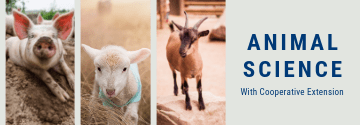For nearly four decades scientists have been refining their ability to test forage quality. This has been done in an effort to improve animal nutrition and consequently animal production. Analytical procedures that previously required a week, or more, to complete can now be done in less than 10 minutes and with more accuracy than before. As the ability to analyze forages has improved, the understanding of how to use the test results to improve animal efficiency and performance has also improved. Unfortunately though, forage quality testing is a valuable management tool that many livestock producers still do not utilize.
Greater net profit is the bottom line for why livestock producers need to know the quality of the forages they are feeding! Not knowing the exact quality of the forage being fed is a two-edged sword that can cut into profits either way it swings. A dairy producer who guesses that the crude protein (CP) content of the haylage is 2% units lower and corn silage is 1% unit lower will be feeding more supplemental protein than is necessary. This extra CP to the ration will add $0.09/cow/day in feed costs. With a herd of 100 cows, this is equivalent to $9.00/day. It would take just a little over 3 days of not knowing the quality of the forages and feeding extra protein, as in this example, to pay for the cost of quality analyses (forage quality testing usually costs less than $15.00/sample).
The other edge of this two-edged sword of not knowing forage quality, is over estimating forage quality. Guessing that forage crude protein is greater than what it actually is resultes in adding insufficient supplemental protein to the ration and saving feed costs. Unfortunately, the cows are being “short changed” on CP which could have a negative impact on milk production, especially in early lactation.
It is also important to note that guessing at fiber and mineral content will also have enormous economical impact. For example, the neutral detergent fiber (NDF) content of forages helps determine how much of the forage an animal will consume. Guessing too high or too low can have tremendous implication on intake, animal performance, and health. Knowing the quality of the forage being fed to animals not only saves or makes more money it also allows managers to provide better animal nutrition which will result in greater animal production and improved animal efficiency (lb milk or weight gain per pound of feed consumed).
Knowing the quality of forages when selling or buying them has also proven to be economically smart. At Pennsylvania hay auctions, where the quality of the hay is analyzed, and the results posted on each load prior to the auction confirms the economic value of knowing hay quality. At these auctions, each percentage unit increase in crude protein resulted in $8.00 more per ton. Selling 10 ton of 20% CP hay as 18% CP hay because the quality was not tested will cost the seller about $160! On the other hand, buying 10 ton 18% CP hay as 20% CP hay cost the buyer $160! A similar relationship between quality and price did not occur at hay auctions when the quality of the hay was unknown. Establishing a “fair” price for hay, if you are buying or selling, involves both parties knowing the quality of the hay.


